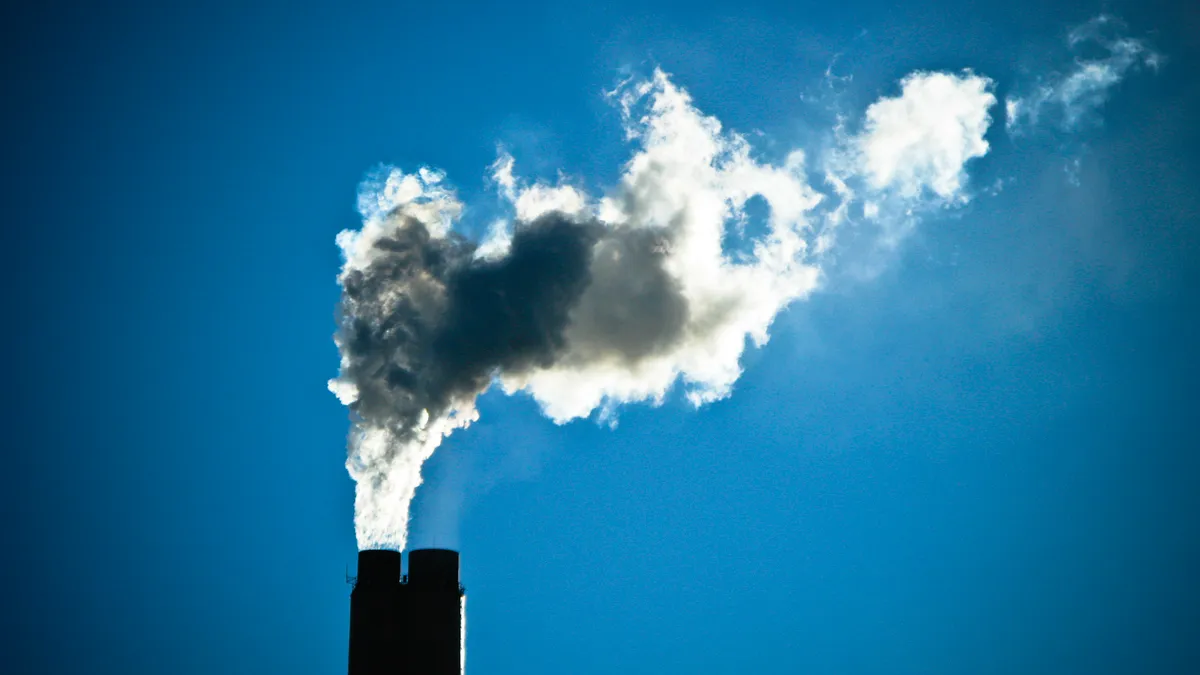Dive Brief:
-
Groups representing electric utilities filed comments in support of the Environmental Protection Agency's proposed emissions rules for coal-fired power plants this week, endorsing looser pollution standards for the generators even as many advocate action on climate change.
-
Though many large investor-owned utilities (IOUs) did not comment directly, the Utility Air Regulatory Group (UARG), a lobbying organization they fund, praised the rule's narrow focus on efficiency improvements at coal plants and its proposed permitting changes for new pollution sources, which would make it easier for generators to make upgrades.
-
Electric cooperatives also praised the rule, but a research firm for large utilities criticized the EPA's decision to limit compliance options to coal plant upgrades, rather than allowing utilities to shift generation to less-polluting natural gas and renewables to comply.
Dive Insight:
Comments filed on the EPA's proposed Affordable Clean Energy (ACE) rule this week demonstrate how the utility industry is quietly fighting against pollution regulations on coal plants even as it transitions to a heavier reliance on natural gas and renewables.
The strategy reflects the industry's playbook for the Clean Power Plan (CPP), President Obama's signature climate change regulation that the Trump administration aims to replace with the ACE rule.
In that case, large IOUs did not mount a direct legal challenge to the CPP, which would have pushed coal plant owners to shift to less-polluting sources like natural gas and renewables. But UARG did, signing on to a lawsuit against the plan and filing critical comments at EPA.
UARG describes itself as a "not-for profit association of individual generating companies and national trade associations," and does not publicly list its members. However, a 2016 investigation by SNL Energy revealed that many large utilities, like Duke Energy, American Electric Power and Southern Co. are members of the organization, as well as their trade group, the Edison Electric Institute.
Each of those utilities touts investments in clean energy and plans to significantly reduce carbon emissions in the next few decades. Even so, the comments of their lobbying arm endorse the EPA's less stringent rules on coal plants.
"EPA's emission guidelines to address GHG emissions from existing electric generating units are consistent with [the Clean Air Act]," UARG wrote. "It is well established that EPA's regulatory reach under [the law] is narrow and limited, and the proposed ACE rule properly respects the scope and bounds of the act."
In particular, UARG and electric cooperatives praised proposed revisions to EPA's New Source Review (NSR) program, which requires plants to undergo new pollution permitting if an upgrade would increase its overall emissions.
EPA's changes would allow facilities to escape the review if they can show their emissions are not increasing on an hourly basis, removing what generators say is a key barrier to upgrade investments.
"Our support for such reform is born out of concern that many common-sense heat rate improvements and other plant physical or operational changes that could increase [power plant] efficiency and therefore reduce emissions are foregone precisely because of the delay and prohibitive costs that attend NSR evaluation and potentially costly required controls," the National Rural Electric Cooperative Association wrote.
Many power sector analysts are concerned that looser NSR rules combined with the more modest emissions caps of the ACE rule could lead the U.S. power sector to actually produce higher greenhouse gas emissions than in the absence of the rule. But NRECA and UARG pushed EPA to take its NSR revision further.
"We also believe that EPA ought to make clear that only those increases in emissions 'caused' by implementation of an [upgrade] (in contrast to, say, increases caused by demand growth) ought to be considered in determining whether NSR is triggered," NRECA wrote. "Thus, EPA needs to incorporate a causation analysis into any new NSR rule that includes an achieved or achievable test."
"EPA must also include provisions that account for causation in order to differentiate between an increase that is caused by the project and an apparent increase that is caused by factors independent from the project," UARG wrote.
While the lobbying arms of the power sector largely supported the rule, one research group funded by utilities suggested EPA include a provision from the Obama Clean Power Plan that would allow utilities to comply with the rule by investing in less-emitting sources like gas or renewables.
"EPA proposes to limit compliance options to those that can be implemented and measured at the [coal plant] unit, possibly allowing averaging across affected units within a single facility," the Electric Power Research Institute wrote in comments. "This omits multiple, proven opportunities for compliance which, if included, could allow for lower-cost compliance while still verifiably meeting the standard of performance, including options for trading, averaging, and generation shifting."
EPA hopes to finalize the ACE rule by March 2019 and the finalized version could contain changes from its proposal. The final rule is likely to face legal challenges from liberal states and environmental groups upon its release.














